Japan, Off The Beaten Path - Escaping The Heat At Shiraito Falls

Shiraito Falls, located at the foot of Mt. Fuji, is one of the most beautiful waterfalls in Japan. The impressive Fujisan Hongu Sengen Shrine and the Mt. Fuji World Heritage Centre, Shizuoka are also in the area.
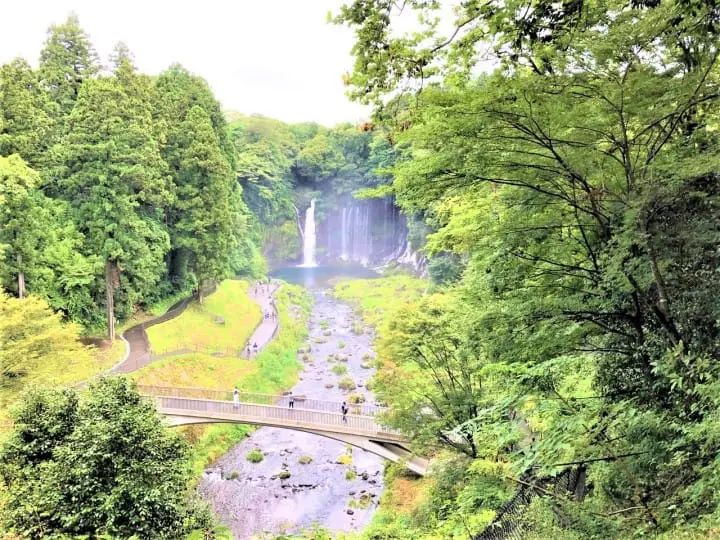
Last weekend I escaped the summer heat with a visit to Shiraito Falls, one of the 100 most beautiful waterfalls in Japan. “Shiraito” means “white threads,” and the waterfall lives up to its name, with dozens of individual falls cascading down a 150-meter forested cliff.
The falls are located in Fujinomiya, near Mt. Fuji, which also gave me the chance to visit Fujisan Hongu Sengen Shrine and the Mt. Fuji World Heritage Museum.
Hiking to Shiraito Falls
I arrived in Fujinomiya at 9:45 on a cloudy Saturday. The forecast called for rain, but it hadn’t started and the clouds kept the temperature nicely cool. The bus to Shiraito Falls left fifteen minutes later and reached the falls at 10:45.
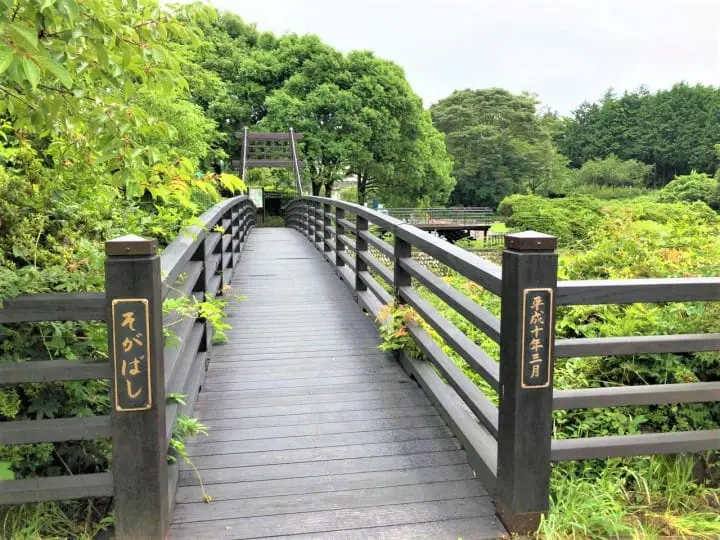
From the bus stop, I crossed the Soga Bridge, which spans the Shibakawa River just north of another nearby waterfall, Otodome Falls. The rushing water mirrored the slate-gray sky. Barn swallows (called tsubame in Japanese) swooped overhead, catching bugs to feed their hungry babies.
A small collection of gift shops beckoned, but I hurried past, eager to see the falls before the rain began.
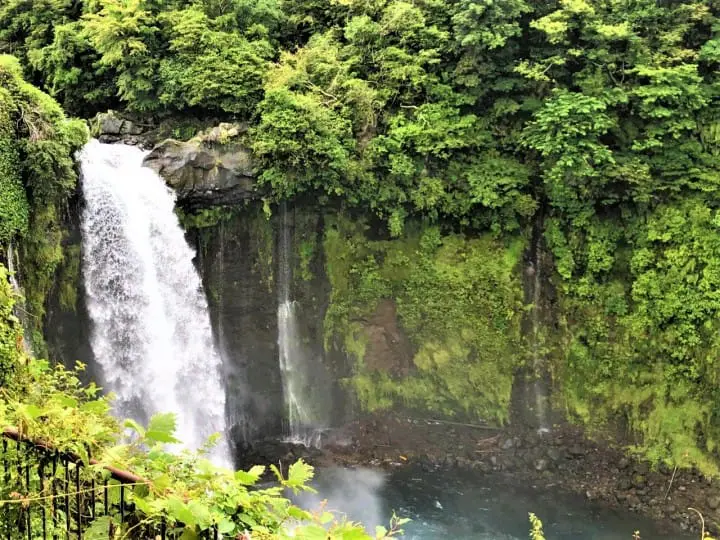
The rumbling of the falls mixed with the swallows’ songs as I walked down the path to the viewing platform. The wide, white bridal veil of Otodome Falls tumbles 25 meters into a deep green pool and then resumes its flow through the rocky bed of the Shibakawa River. An impressive sight, but an even more spectacular waterfall waited a little farther down the path.
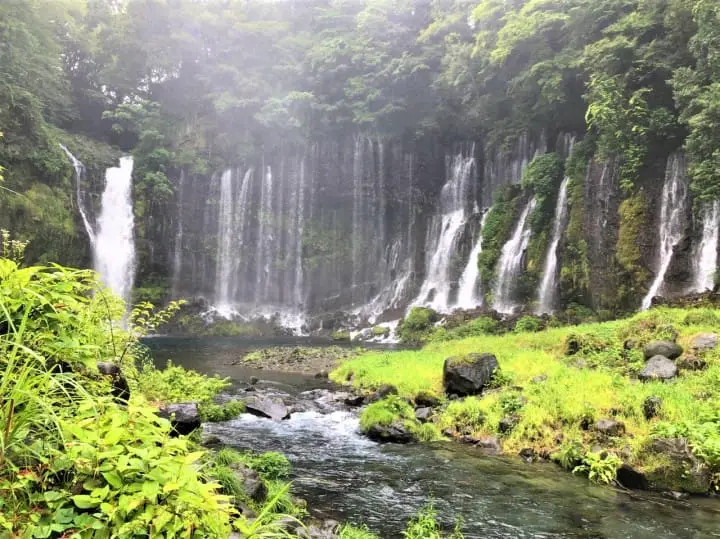
I caught my first glimpse of Shiraito Falls from the top of the long, curved flight of stairs that led down to the falls. More than three dozen waterfalls, each one 20 meters high, cascaded down a forested cliff. Ferns and mosses grew from the stone between the falls.
Near the bottom of the stairs, the spray from the falls filled the air with fine, cool mist. A bridge arched over the river at the base of the waterfalls. As I crossed it and walked along the path beside the falls, each view seemed more beautiful than the one before.
Half an hour later, I tore myself away from the falls and returned to the visitor center, where I watched the swallows feeding their hungry babies as I waited for the bus. In Japan, tsubame nesting in the eaves is considered good luck. Based on the number of baby swallows at Shiraito Falls, Fujinomiya is a lucky place indeed.
Fujisan Hongu Sengen Shrine – The Traditional Starting Point of a Fuji Pilgrimage
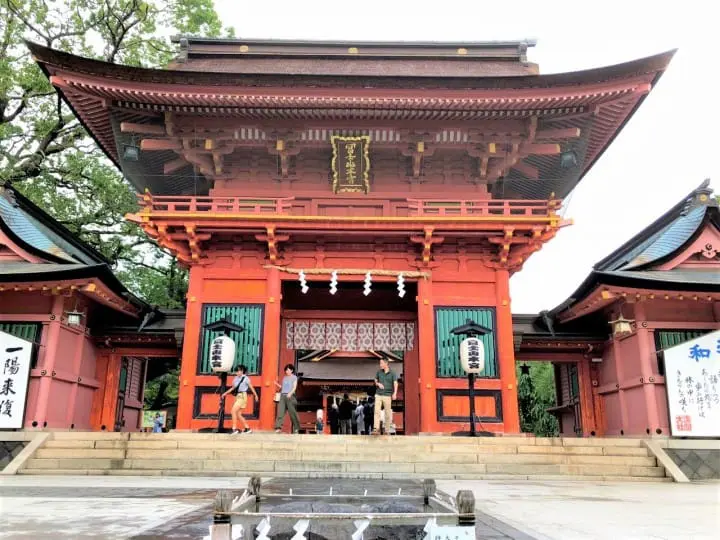
I returned to central Fujinomiya at 13:00, and since it wasn’t raining yet I walked ten minutes north of the station to visit Fujisan Hongu Sengen Shrine.
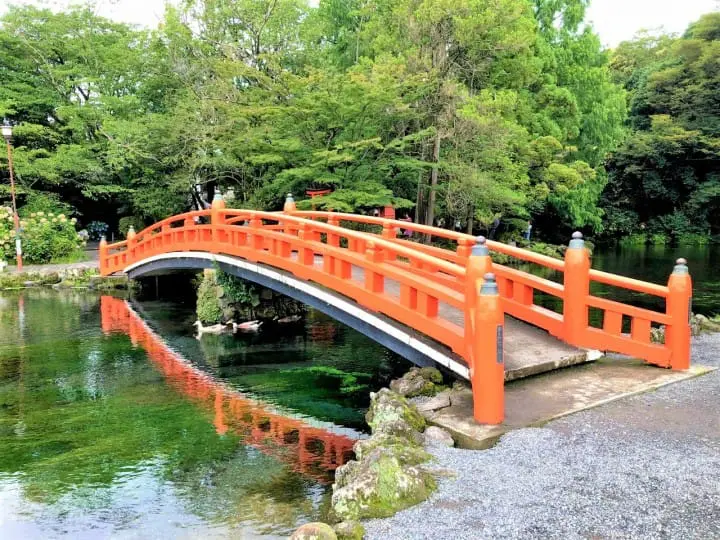
The shrine is dedicated to Asama Okami, a Shinto deity also known as Konohana-no-sakuyahime—better known to many people as the spirit of Mt. Fuji. Since its construction in 806, this Shinto shrine has served as the starting point for pilgrimages to the sacred peak, which is also the highest mountain in Japan.
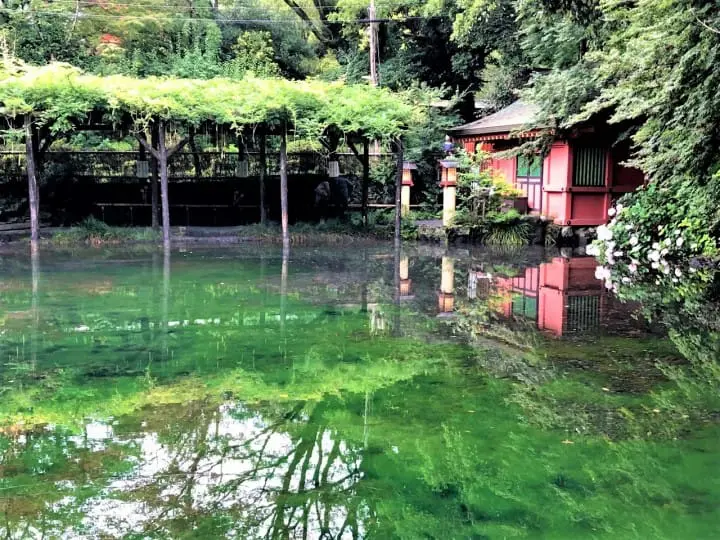
In addition to its beautiful architecture and sacred history, Fujisan Hongu Sengen Shrine is home to a freshwater spring that emerges from a 10,000 year-old lava flow. Visitors can fill bottles of water and enjoy a taste of this clear, fresh spring, which flows from the sacred mountain into Wakutama Pond.
Fujinomiya’s Famous Yakisoba Noodles
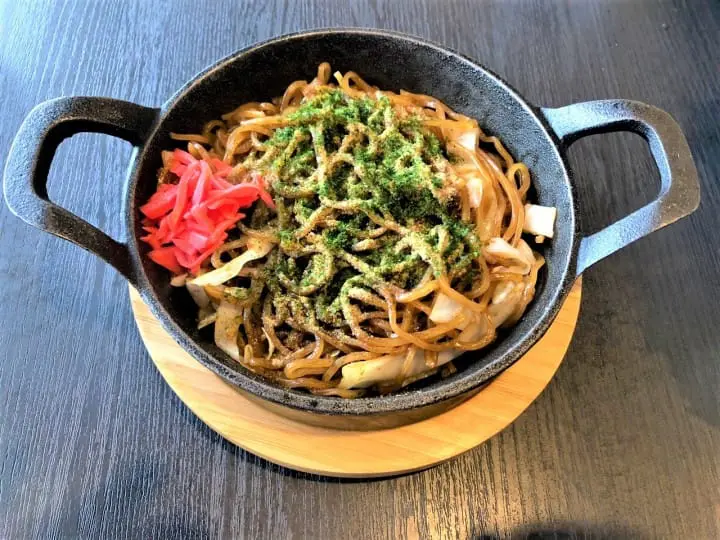
Hiking is hungry work, so after visiting the waterfalls and shrine, I stopped at a nearby restaurant for a taste of the local specialty: Fujinomiya yakisoba. Chewy soba noodles are stir-fried with cabbage, pork and a soy-based sauce, creating a special savory treat.
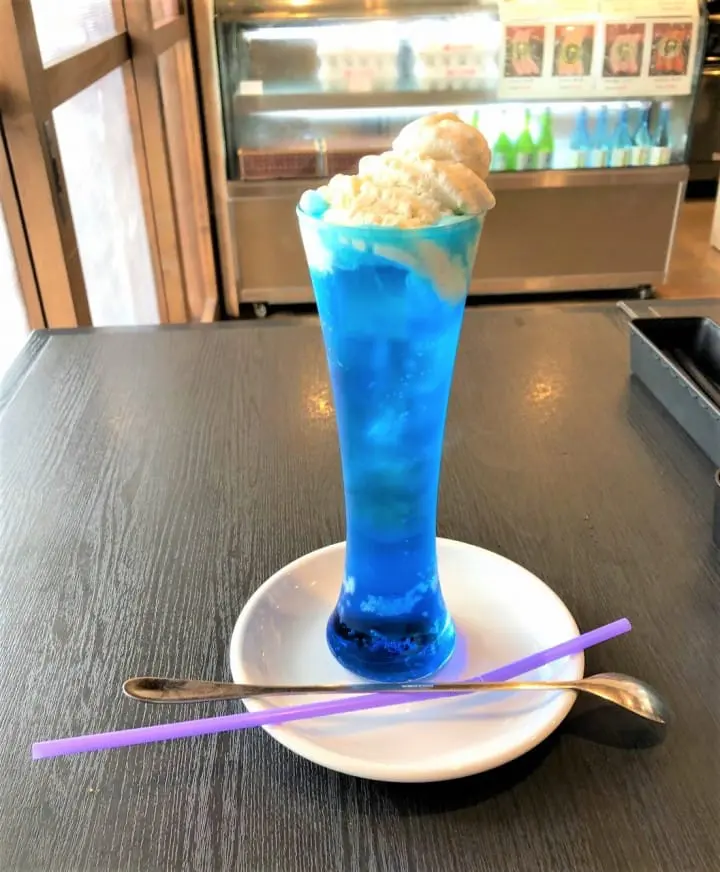
I finished the meal with “Mt. Fuji Soda”—a flavorful soda topped with vanilla bean ice cream served in a tall, thin glass. The restaurant offered both “Summer Fuji” (green melon soda) and “Winter Fuji” (vanilla cream soda), and although I visited in July the cool blue “winter soda” was just the thing to beat the summer heat.
A Unique World Heritage Museum Celebrating Mt. Fuji

After lunch, I walked to the nearby Mt. Fuji World Heritage Centre, Shizuoka, which allows visitors to “climb” the famous peak without spending two days on a mountain trail. The building’s unique architecture features an inverted cone that reflects an image of Mt. Fuji in the pool in front of the museum.
Inside, a carpeted ramp spirals slowly upward through four stories’ worth of exhibits. At the top, a “summit observatory” offers views of Mt. Fuji in good weather. Projection screens on the walls around the ramp display time-lapse images taken at various places along the trails up Fuji’s slopes.
Between the screens, projections of shadowy climbers “hike” across still photographs. Climbing the ramp transported me back to my own ascent of Mt. Fuji in 2018, and I can say from experience that “climbing” through the museum gives a genuine sense of how it feels to climb the famous mountain.
Mt. Fuji was not visible the day I visited, but the observation platform features many excellent photographs of the mountain, including a large one taken from the museum on a sunny day. On the descent, I stopped at each of the exhibits dedicated to the geology, biology, and history of Mt, Fuji, as well as the museum theater, where I watched a magical ten-minute movie with amazing views of Mt. Fuji from every angle in every season of the year.
Many people consider Fujinomiya merely an “access point” for climbs of Mt. Fuji along the popular Fujinomiya Trail. However, there’s quite a bit to do and see in this hidden gem of a city, from beautiful waterfalls to delicious food and a museum that lets anyone, of any age, experience the magic of Japan’s most famous peak.
Text and photos by Susan Spann
Susan Spann is the author of the Hiro Hattori mystery novels. She lives in Tokyo, but frequently travels across Japan, climbing mountains and seeking adventures off the beaten path. You can find her online at www.susanspann.com.
Susan Spann is the author of the Hiro Hattori mystery novels. She lives in Tokyo, but frequently travels across Japan, climbing mountains and seeking adventures off the beaten path. You can find her online at www.susanspann.com.











































![[2026] Top 5 Strawberry Picking Spots in Tokushima, Naruto| Farms and Access Guide for January to May](https://resources.matcha-jp.com/resize/720x2000/2025/03/06-227165.webp)
![[Yamanashi/ Hokuto City] 4 Hot New Spots Opening in 2026](https://resources.matcha-jp.com/resize/720x2000/2025/12/12-252747.webp)


